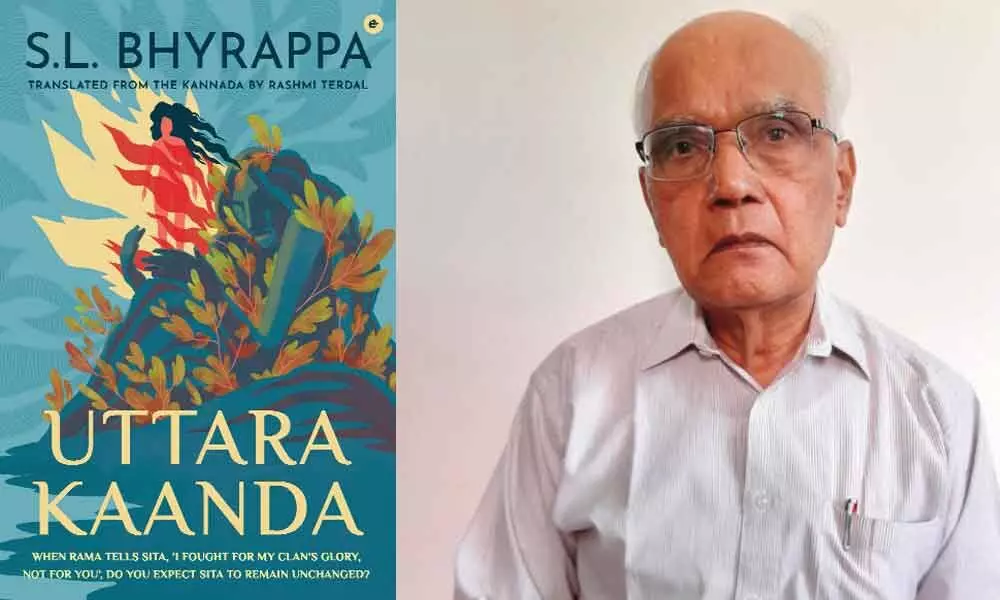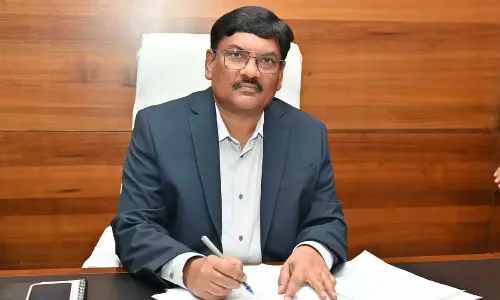Recreated mythological characters into human beings in Uttara Kaanda: Bhyrappa

Uttara Kaanda is SL Bhyrappa's twenty-fourth novel. In this, Sita looks back on her life -- abandoned at birth and abandoned again by her husband. Her exile doesn't end.
Uttara Kaanda is SL Bhyrappa's twenty-fourth novel. In this, Sita looks back on her life -- abandoned at birth and abandoned again by her husband. Her exile doesn't end. The stalwart of Kannada literature, Bhyrappa said that he had been so overwhelmed by Valmiki's Ramayana that he couldn't go beyond Ayodhya Kaanda. However, the all-pervasiveness of the Rama discourse on Indian writing and philosophy compelled him to examine the final volume of the original epic: Uttara Kaanda. It was a revelation. In it, he saw Rama, Lakshmana, and Sita as humans. Lakshmana's subservience to his brother was not absolute; power had changed Rama; and Sita never recovered from the humiliation of her banishment. He has received numerous awards including the Sahitya Akademi Award, Karnataka Sahitya Academy Award and Pampa Award. The book has now been translated in English by journalist, Rashmi Terdal. He talks to The Hans India on Uttara Kaanda.
There are many who say Uttara Kaanda was not the part of the original Ramayan, but was added later and hence this is just an interpolation. The contrary view is that Ramayana ends with Ayodhya Kaand. Many point out that the tone and tenor of Ram changes completely in Uttar Ramayan. What do you have to say on this?
Yes. There are many versions of the Ramayana. One of them ends with Rama's coronation as the king of Ayodhya. In another, Valmiki writes the story of Rama and trains his twin sons to sing it before him and Rama asks who these boys are. Which means Rama does not know or does not care to know what happens to Sita after he abandons her. There are Ramayanas in Thailand, Indonesia, Hindi, Kannada, Tamil and other languages. While writing my novel I have exercised the freedom of a novelist.
Many say that Lord Rama knew about the innocence of Sita but was compelled to abandon her in the name of 'Rajdharma'. How do you see this particular part of Uttara Kaanda and what sort of revelations you came across?
I have discussed this in at a couple of places in the novel. On this matter Rama's Rajadharma differs from Lakshmana's. Lakshmana argues with Rama to punish the miscreants who were slandering Sita and not to abandon/banish her. Sita expresses it in the Dharma Sabha: "If in your heart you were so convinced that I was pure, but you were reluctant to punish the rumour-mongers as suggested by Lakshmana, you could have decided not to sit on the throne while carrying the burden of the public opinion about me. You could have abdicated…….How did an immoral, untruthful lot of citizens become more important to you than a truthful wife?"
One of the other instances often disputed is the killing of Shambuka Rishi by Lord Ram in Uttara Kaand. Dalit activists use this part to allude to caste system while the contrary view is that the part was included to oppose Brahmins.
Educated readers of the twentieth and twenty first centuries, irrespective of caste and creed, have rejected the justification of Rama's killing Shambuka.
You state that in Uttara Kaanda the humaneness of Ram, Sita and Lakshman emerged before you? Could you elaborate on this?
I have recreated the mythological characters into human beings both in Parva and Uttara Kaanda and details of changes follow from this recreation.
Now the book is translated into English it would reach the wide audience. How do you feel? How was the reaction to the original Kannada version?
Original Kannada version was received with great appreciation. The response to English translation is also very good.
















